
Extremes
Scope & Guideline
Innovative Research: Bridging Disciplines through Extremes
Introduction
Aims and Scopes
- Extreme Value Theory (EVT):
The core focus of the journal is on the development and application of extreme value theory, which provides the statistical foundation for analyzing the tails of probability distributions and understanding rare events. - Multivariate and Spatial Extremes:
The journal emphasizes research on multivariate extremes and spatial extremes, exploring the dependencies and interactions between multiple extreme variables, especially in geographic contexts. - Applications in Environmental and Natural Sciences:
Many articles apply extreme value methods to environmental data, such as climate extremes, natural disasters, and ecological phenomena, highlighting the practical relevance of the research. - Stochastic Processes and Modeling:
The journal includes studies on stochastic processes related to extremes, utilizing models like Gaussian processes, Markov chains, and other probabilistic frameworks to analyze extreme phenomena. - Methodological Innovations:
A significant contribution of the journal is the introduction of novel statistical methods and computational techniques, including semi-parametric approaches, machine learning integrations, and Bayesian methods for extreme data analysis. - Risk Assessment and Management:
The journal addresses the risk assessment and management of extreme events, providing insights into probabilistic forecasting, risk mitigation strategies, and decision-making frameworks in uncertain conditions.
Trending and Emerging
- Machine Learning Integrations:
There is a growing trend of integrating machine learning techniques into extreme value analysis, enhancing predictive capabilities and allowing for more flexible modeling of complex data structures. - High-Dimensional Extremes:
Research on high-dimensional extremes is on the rise, focusing on the statistical challenges and methodologies required to analyze extreme events in high-dimensional datasets, particularly in fields like finance and environmental science. - Spatio-Temporal Modeling:
The emphasis on spatio-temporal extremes is increasing, with researchers developing models that account for both space and time in extreme event analysis, crucial for understanding phenomena like climate change impacts. - Causal Inference in Extremes:
Causal modeling approaches in the context of extreme values are emerging, with studies exploring the relationships between variables and the influence of extreme events on various outcomes. - Risk Management and Policy Applications:
Research focusing on the implications of extreme events for risk management and policy-making is gaining traction, highlighting the importance of statistical insights in addressing real-world challenges related to extreme phenomena.
Declining or Waning
- Traditional Univariate Extreme Models:
There is a noticeable decline in publications focusing solely on traditional univariate extreme value models, as researchers increasingly explore multivariate and spatial dependencies. - Basic Statistical Techniques:
Basic statistical techniques in extreme value analysis have seen reduced attention, with a shift towards more complex methodologies that incorporate machine learning and advanced computational approaches. - General Environmental Statistics:
While environmental extremes remain a key area, general statistical methodologies applicable to environmental data are being overshadowed by specialized studies that focus on extreme events specifically. - Historical Data Analysis:
Research concentrating on the analysis of historical extreme events without modern statistical enhancements is becoming less frequent, as the field moves towards more sophisticated and predictive modeling approaches. - Non-Statistical Approaches:
Themes related to non-statistical or purely descriptive analyses of extremes have waned, as the journal increasingly prioritizes robust statistical methodologies and theoretical advancements.
Similar Journals
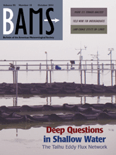
BULLETIN OF THE AMERICAN METEOROLOGICAL SOCIETY
Unveiling the complexities of climate and weather phenomena.BULLETIN OF THE AMERICAN METEOROLOGICAL SOCIETY, published by the American Meteorological Society, stands as a premier forum in the field of meteorology and atmospheric science, boasting an impressive ranking in the Q1 category for 2023. With a long-standing history dating back to 1972, this journal serves as a vital resource for researchers, practitioners, and students dedicated to advancing the understanding of atmospheric phenomena. The journal facilitates the dissemination of cutting-edge research, innovative methodologies, and significant findings that propel the scientific community forward. Although not an Open Access journal, it remains a critical publication for comprehending complex environmental interactions, climate change, and weather-related phenomena. The BULLETIN OF THE AMERICAN METEOROLOGICAL SOCIETY is essential reading for anyone invested in atmospheric sciences, providing invaluable insights that shape policy, enhance safety, and promote environmental sustainability.
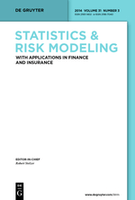
Statistics & Risk Modeling
Transforming data into actionable risk strategies.Statistics & Risk Modeling is a distinguished journal published by WALTER DE GRUYTER GMBH, focusing on the intricate relationships between statistical methodologies and risk assessment techniques. With a strong academic foundation, the journal has been an influential platform in its field since its inception, converging contributions from 1982 to 2002 and again from 2011 to 2024. This journal is currently ranked in the Q3 category in both Modeling and Simulation and Statistics and Probability, reflecting its commitment to advancing knowledge and promoting robust research in statistics, probability, and uncertainty analysis. Although it offers a traditional subscription model, its significant contribution to the community is underscored by its increasing visibility in Scopus rankings, where it stands in the 44th percentile for Decision Sciences and Statistics. By comprehensively addressing contemporary issues in statistical theory and its practical applications, Statistics & Risk Modeling serves as an essential resource for researchers, professionals, and students aiming to deepen their understanding of statistical science and its implications in risk management.
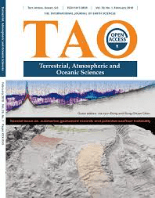
TERRESTRIAL ATMOSPHERIC AND OCEANIC SCIENCES
Advancing Knowledge in Atmospheric and Oceanic RealmsTERRESTRIAL ATMOSPHERIC AND OCEANIC SCIENCES, published by SpringerNature, is a distinguished peer-reviewed journal that has been an essential platform for innovative research in the fields of atmospheric science, oceanography, and Earth and planetary sciences since its inception. With an Open Access policy established in 1990, the journal ensures wide dissemination of knowledge, allowing researchers, professionals, and students to access cutting-edge findings without restrictions. Based in Switzerland and featuring a comprehensive coverage from 1996 to 2024, the journal currently holds a Q3 ranking across various categories, indicating its growing significance in the scientific community. Although it is positioned within the 39th percentile in Earth and Planetary Sciences, its commitment to fostering high-quality research makes it a valuable resource for advancing understanding of terrestrial environments and their interconnections. Researchers seeking a platform for their work in atmospheric and oceanic sciences will find TERRESTRIAL ATMOSPHERIC AND OCEANIC SCIENCES to be an ideal venue for sharing their insights with a global audience.
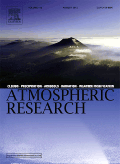
Atmospheric Research
Fostering Innovation in Meteorological StudiesAtmospheric Research is a premier journal published by Elsevier Science Inc, specializing in the field of Atmospheric Science. With a commendable impact factor, it holds a distinguished position in the Scopus rankings, being placed 14th out of 148 journals within its category and achieving a remarkable 90th percentile rank. This journal serves as a vital outlet for rigorous research on atmospheric processes, climate variability, and meteorological phenomena, providing a platform for scientists, researchers, and students to disseminate their findings and contribute to the advancement of knowledge in this critical field. Although it is not an open-access journal, its strong reputation and selective publication criteria ensure that only high-quality and impactful studies are featured. Since its inception in 1986, Atmospheric Research has continuously evolved to meet the dynamic nature of atmospheric studies, making it a fundamental resource for anyone engaged in understanding and addressing atmospheric challenges worldwide.
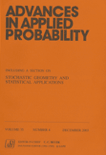
ADVANCES IN APPLIED PROBABILITY
Innovating Statistical Methodologies for a Complex WorldADVANCES IN APPLIED PROBABILITY is a prestigious academic journal published by Cambridge University Press, focusing on the critical intersection of applied mathematics and probability theory. With an ISSN of 0001-8678 and an E-ISSN of 1475-6064, this journal emphasizes the development and application of probabilistic models in various sectors, enhancing the rigor and reliability of statistical methodologies. Established in 1969, the journal has evolved with converged years designated up to 2024, maintaining a steady release of cutting-edge research. As a Q2-ranked journal in both Applied Mathematics and Statistics and Probability categories as of 2023, it ranks favorably within the Scopus database, demonstrating its growth in influence and relevance within the academic community, with ranks of 141/278 and 353/635 in its respective fields. Although it does not offer open access, the journal remains a vital resource for researchers, professionals, and students seeking to advance their knowledge and understanding of probability applications across diverse disciplines.
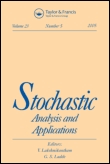
STOCHASTIC ANALYSIS AND APPLICATIONS
Exploring the intersection of theory and practice in stochastic processes.STOCHASTIC ANALYSIS AND APPLICATIONS is a prestigious peer-reviewed journal published by Taylor & Francis Inc, dedicated to advancing the field of stochastic processes and their applications across various disciplines. With an ISSN of 0736-2994 and an E-ISSN of 1532-9356, this journal has established itself as a vital resource for researchers and practitioners, offering high-quality articles that address both theoretical and practical aspects of stochastic analysis. As of 2023, the journal holds a commendable Q2 rank in the fields of Applied Mathematics, Statistics and Probability, and Statistics, Probability and Uncertainty, reflecting its significant impact in these domains. The journal is indexed in Scopus and ranks in the top percentiles for its categories, making it an essential read for scholars interested in the latest developments in stochastic methods and their real-world implications. Although it does not offer open access, the journal ensures that its contents are widely disseminated within academia, fostering knowledge that drives innovation and application in various sectors.
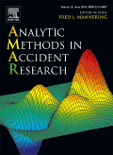
Analytic Methods in Accident Research
Empowering researchers to innovate in safety and transportation.Analytic Methods in Accident Research, published by ELSEVIER, is an esteemed journal dedicated to the rigorous exploration of methodologies in safety research and transportation studies. Established in 2014, the journal serves as a vital platform for researchers, practitioners, and policymakers focusing on innovative approaches to accident analysis, ultimately aiming to enhance public safety and improve transportation systems. With an impressive impact factor reflected in its Q1 rankings in both Safety Research and Transportation, the journal ranks #1 out of 109 in Safety Research and #2 out of 141 in Transportation, showcasing its influential position within these fields. The journal emphasizes open access to a range of articles, making cutting-edge research accessible to a diverse audience. As it converges toward its 2024 milestone, Analytic Methods in Accident Research continues to play a crucial role in fostering innovative findings and solutions, making it an indispensable resource for any scholar or professional engaged in safety and transportation research.

STATISTICS & PROBABILITY LETTERS
Advancing statistical knowledge, one letter at a time.STATISTICS & PROBABILITY LETTERS is a distinguished journal published by ELSEVIER, dedicated to advancing the field of statistics and probability. With an ISSN of 0167-7152 and an E-ISSN of 1879-2103, this journal is an essential platform for research, featuring cutting-edge studies and significant findings in the realms of statistical theory and applied probability. The journal operates under a notable Q3 ranking in both the categories of Statistics and Probability, and Statistics, Probability and Uncertainty for 2023, underscoring its relevance in these fields. Researchers, professionals, and students alike benefit from its rigorous peer-review process and its commitment to published integrity, fostering innovative insights from 1982 through its anticipated convergence in 2025. While it does not offer open access, the journal’s widely recognized impact within the academic community makes it a valuable resource for anyone seeking to deepen their understanding of statistical methodologies and probabilistic models.

ESAIM-Probability and Statistics
Fostering collaboration through statistical innovation.ESAIM-Probability and Statistics, published by EDP Sciences S A, is a prominent journal focused on advancing the field of probability and statistics. With an ISSN of 1292-8100 and E-ISSN 1262-3318, this journal has been a beacon of scholarly communication since its inception in 1997. Operating out of France, it offers a platform for researchers and professionals to share significant findings and foster collaboration within the statistical community. Designated as Q3 in the Statistics and Probability category for 2023, it plays a vital role in the dissemination of critical research, despite its recent Scopus ranking of 226 out of 278 indicative of its growing visibility and impact. Researchers, students, and professionals alike benefit from its rich pool of analytical insights and innovative methodologies, marking it as an essential resource for those immersed in statistical theory and applications. With a commitment to excellence in research, ESAIM-Probability and Statistics continues to contribute to the instructional and professional development of its readership.

Weather and Climate Extremes
Building a Repository of Knowledge for Climate ActionWeather and Climate Extremes is a premier open access journal published by Elsevier, dedicated to advancing the understanding of extreme weather and climate phenomena from 2013 onwards. With an impressive impact factor, this journal ranks in the Q1 quartile across several categories including Atmospheric Science and Geography, Planning and Development, highlighting its significance in the field. The journal serves as a vital platform for researchers, professionals, and students, enabling them to disseminate their findings on climate variability, response strategies, and policy implications. Its accessibility ensures a wide reach, fostering collaboration and innovation while building a comprehensive repository of knowledge to address the challenges posed by climate extremes. The journal’s commitment to quality research is reflected in its Scopus rankings, with top placements across multiple disciplines, signaling its influence in shaping the discourse on climate and ecological management.